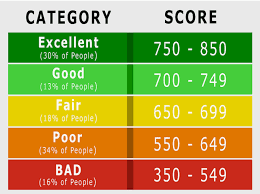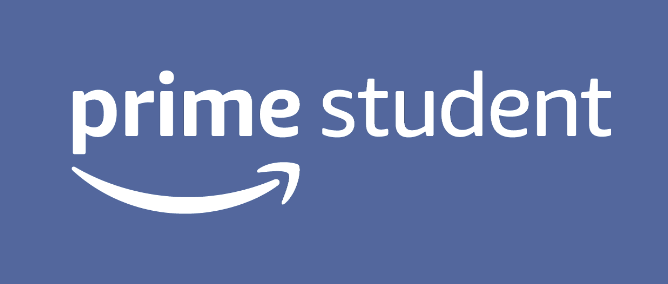When it comes to college education in the United States, the numbers are astounding (and not in a good way). The total student debt has reached a high of $1.7 trillion, with the average undergrad borrowing about $30,000.
Unfortunately, most students do not know how to manage their student debt successfully because they haven’t been given adequate financial education to help them do so.
So, if you need to borrow money for school (like I did), be smart about it.
First, explore all the free money available to you — grants and scholarships — as well as work-study programs available at your school and part-time jobs that will accommodate your school commitments.
Next, if you still need it, check out federal student loans that are issued by the U.S. Department of Education.
Here’s what you need to know about federal student loans:
1. What types of federal student loans are available?
Currently, four types of federal student loans are available through the William D. Ford Federal Direct Loan Program (Direct Loans).
The Department of Education is your lender, but the loans are serviced by loan servicing organizations or companies assigned to help the government manage the billing and other services for your loan. You could have more than one servicer if you have multiple federal student loans.
- Direct Subsidized Loans: These loans are available only to undergraduate students with financial need. The Department of Education pays the interest while: (a) you’re in school at least half-time; (b) you’re in grace period (first 6 months after graduation); and you’re in deferment (you have chosen to postpone your loan repayment).
- Direct Unsubsidized Loans: These loans are available to undergraduate, graduate and professional students, and there is no need to demonstrate financial need. Unlike “subsidized” loans, you have to pay the interest on unsubsidized loans even when you’re in school, in grace period, or in deferment. Since interest accrues, you should pay the interest if you can afford it during those periods. If you can’t, accrued interest will be added to your principal and you will have a larger overall amount to pay back.
- Direct PLUS Loans: These are available to parents of dependent undergraduate students (Parent PLUS) and graduate or professional students (Grad PLUS). While there is no need to demonstrate financial need, borrowers have to undergo a credit check and must not have an adverse credit history. But, if you have an adverse credit history, don’t lose heart. You may still qualify under certain circumstances (explained below).
- Direct Consolidation Loans: These loans combine your eligible federal student loans into a single loan, so you have one payment to make and one single loan servicer to deal with. The loans to be consolidated must be in repayment or in grace period.
2. Are you eligible for Direct Loans?
To qualify, you must meet ALL of the following requirements:
First, you have to show financial need, which will be assessed based on the data you provide on your Free Application for Federal Student Aid (FAFSA), if you want to borrow Direct Subsidized Loans.
Second, you must be a U.S. citizen or U.S. national, OR fall under one of the following categories of eligible noncitizens who have:
- A green card;
- A Form I-94, “Arrival-Departure Record,” showing “Refugee,” “Asylum Granted,” “Cuban-Haitian Entrant,” “Conditional Entrant” (valid if issued before April 1, 1980), or “Parolee”;
- A battered immigrant status, or is the child of a person with battered immigrant status; or
- A T-Visa (for victims of human trafficking).
Third, you must have a valid Social Security Number, unless you are a citizen of the Pacific Freely Associated States (the Marshall Islands, the Federal States of Micronesia, and the Republic of Palau).
Fourth, you must be registered with the Selective Service, if you are a male between the ages of 18 and 25.
Fifth, you must be enrolled in an eligible degree/certificate program. Check with your school’s financial aid department to confirm eligibility.
Sixth, you must be enrolled at least half-time.
Seventh, you must make Satisfactory Academic Progress (SAP) by maintaining a certain grade point average (GPA), taking a minimum number of credit hours per semester, and staying on track to complete your degree in an acceptable time period. SAP standards vary from school to school, so speak with your school’s financial aid office to see what you should expect.
Eighth, you must certify on FAFSA that (1) you are not in default on a federal student loan and do not owe money on a federal student grant, and (2) you will use federal student aid only for educational purposes.
Ninth, you must have a high school diploma, GED, approved homeschool education, or an eligible career pathway program. Speak to your school’s financial aid office to find out if your school offers an eligible career pathway program.
Once you’ve received Direct Loans, be sure to maintain your eligibility as long as you need the loans. If you lose eligibility, you can take steps to regain it.
3. How do you apply for Direct Loans?
To apply for any of the four Direct Loans, you must fill out the FAFSA form. The FAFSA, which is free to fill out and submit, is used by current and prospective colleges to determine a student’s eligibility for various forms of financial aid.
Filling out the FAFSA can be a long process that requires financial and other information, so be sure to start early and get it in as soon as possible. The open date every year is October 1, so you have plenty of time to fill it out before the federal deadline on June 30.
States and even schools also have their own deadlines for FAFSA submission, so it is best to check with your school’s administration to make sure you get your form in on time.
Check here for some helpful tips about filling out your FAFSA.
You must fill out the FAFSA every year if you want to stay eligible for Direct Loans, so be sure to keep abreast of any changes in the form and comply with deadlines.
4. What are the interest rates for Direct Loans?
The interest rate is dependent on the type of loan and the date on which the loan is first disbursed, and is generally lower for “subsidized” and “unsubsidized” loans to undergraduates.
For loans first disbursed on or after July 1, 2024, and before July 1, 2025, the interest rate is:
- 6.53% for Direct Subsidized Loans and Direct Unsubsidized Loans to undergraduate students;
- 8.08% for Direct Unsubsidized Loans for graduate or professional students; and
- 9.08% for Direct PLUS Loans.
The rate for Direct Consolidation Loans is the weighted average of interest rates on loans being consolidated.
The interest rate is a fixed rate, meaning that the rate doesn’t change, so your monthly payments will always be the same amount. Knowing how much you need to pay each month will help you with your budget.
The interest rate is set every July 1 according to federal law.
5. How much can you borrow?
Since Direct Loans are meant to be used only for educational purposes, the maximum loan amount for an academic year is determined by the costs of your school minus other financial aid you get.
Your school will determine the type of loan you get, if any, and the actual loan amount.
In addition, for Direct Subsidized and Direct Unsubsidized Loans, there are limits based on the year you’re in and your status as a dependent or independent child. Check here for details on how much you can borrow under these two loan types.
You can estimate your aid for free using the Federal Student Aid Estimator.
Keep in mind, though, that your goal is to borrow as little as possible, so you graduate with the least amount of debt. This is particularly important for undergraduate students who intend to pursue a higher degree in law, medicine or business, and have to borrow then. You don’t want to add debt on top of debt.
6. Why is creditworthiness important?
As mentioned above, a credit check is required for federal Direct PLUS loans. When your credit is pulled, banks and institutions can see your credit history and your credit score.
Your credit history is, essentially, your financial record showing how you handled payments of debt. It takes time to build a solid credit history, so you should start, if you haven’t already.
A credit score is a three-digit number — ranging from 300 to 850 — that banks and institutions use to determine how financially responsible you are and whether to issue you a loan or credit card. Below is a chart that shows what affects your credit score.

A higher score not only improves the odds of having your application approved, but also makes you eligible for lower interest rates. A lower score, on the other hand, reduces your chances of getting a loan and translates into higher interest rates.
Generally, a credit score of 750 and above is considered excellent, and 700 and above is considered good. Below is a chart of the various categories of credit score.

7. What if you have an adverse credit history?
If you have an adverse credit history, you and your parent may still qualify for Grad PLUS or Parent PLUS loans if you:
- Find an endorser, meaning another creditworthy individual who agrees to repay the loan if you fail to repay it; or
- Show evidence of extenuating circumstances for your adverse credit history to the Department of Education.
In addition, you must complete the PLUS Credit Counseling process.
8. Are there any benefits to Direct Loans?
Federal student loans have several benefits. Two of the most significant ones are the Public Service Loan Forgiveness (PSLF) and the Teacher Education Assistance for College and Higher Education (TEACH) Grant programs.
In addition, if borrowers have problems making their monthly payments on their federal student loans, they have the option to apply for deferment or forbearance (explained below), or to have their monthly payment adjusted based on their discretionary income (details below).
Another benefit is that the government will pay the interest on Direct Subsidized loans when you’re in school, in grace period, or in deferment.
9. What are your repayment options?
Your repayment options vary depending on the type of loan you have. While only Parent PLUS borrowers are required to make payments while the child is in school (they can also defer payments), it’s still important to know your options before you make your loan decision.
Here are the standard repayment options:
- Standard Repayment Plan: This plan saves you the most money because it allows you to pay off your loan most quickly — within 10 years if you have unconsolidated loans, and within 10-30 years if you have consolidated loans. However, since the fixed monthly payments are higher, this is not a viable option for borrowers seeking PSLF. By the way, this will be your default option if you don’t choose a repayment plan.
- Graduated Repayment Plan: With this plan, you will start with low monthly payments that will increase every two years. You pay off your loan within 10 years if you have unconsolidated loans, and within 10-30 years if you have consolidated loans. It’s generally not an option for those seeking PSLF.
- Extended Fixed Repayment Plan: If you need to lower their monthly payments, this plan gives you the option to extend your payment period up to 25 years. You will have a fixed monthly payment. To qualify, your outstanding loan amounts must be more than $30,000. This plan is not an option for those seeking PSLF.
- Extended Graduated Repayment Plan: This plan also gives you the option to extend your payment period up to 25 years, but your lower monthly payments increase over time. To qualify, your outstanding loan amounts must be more than $30,000. This plan is not an option for those seeking PSLF.
Additionally, there are four income-driven repayment plans (IDR), in which payments are based on a percentage of the borrower’s discretionary income. IDR plans are good options for those seeking PSLF.
- Saving on a Valuable Education (SAVE) Plan (formerly the REPAYE Plan): Your monthly payments will depend on whether you have undergraduate or graduate loans: 5% of discretionary income if you have undergraduate loan and a weighted average of 5% to 10% if you have graduate loans. If you haven’t paid back your undergraduate loans in full after 20 years, or your graduate or professional study loans after 25 years, the outstanding balance will be forgiven, but you may have to pay taxes on the amount forgiven.
- Pay As You Earn Repayment Plan (PAYE): Your monthly payments will be 10% of discretionary income. If you haven’t paid back your loan in full after 20 years, the outstanding balance will be forgiven, but you may have to pay taxes on the amount forgiven.
- Income-Based Repayment Plan (IBR): The percentage depends on whether you first borrowed your loan after July 1, 2014 or before. If you first borrowed after July 1, 2024, your monthly payments are generally 10% of your discretionary income. If you borrowed before July 1, 2024, your monthly payments will be 15% of your discretionary income. If you haven’t paid back your loan in full after 20 or 25 years (depending on whether you borrowed after July 1, 2014 or before), the outstanding balance will be forgiven, but you may have to pay taxes on the amount forgiven.
- Income-Contingent Repayment Plan (ICR): Your monthly payments will be 20% of your discretionary income. If you haven’t paid back your loan in full after 25 years, the outstanding balance will be forgiven, but you may have to pay taxes on the amount forgiven.
10. What if you’re having trouble paying back your loans?
Get in touch with your loan servicer right away if you’re struggling to make your monthly payments. You don’t want a situation where your loan becomes delinquent or in default, because it will affect your credit score.
An account is “delinquent” the day after a first missed payment, and is deemed “in default” when it is 270 days delinquent. So, if you miss one or two payments, your loan is delinquent. But if you miss several payments, your loan will be at risk of default.
If you have money for your monthly payments but you forget, simply change to an automatic debit method to ensure timely payments.
If you can’t afford your monthly payments, however, you need to check into lowering your monthly payments. Here are a few options:
- You can apply for IDR plans (described above) at StudentLoans.gov.
- If you have multiple federal loans, you can apply to consolidate some or all of the loans into a single loan here. For advice on whether you should consolidate your loans, check this TUN interview with Betsy Mayotte, president and founder of the Institute of Student Loan Advisors.
- Another option is to refinance your loans through private lenders. Refinancing, like consolidation, allows you to roll multiple loans into one loan. Your interest rate is typically determined by your credit score. The caveat: borrowers who refinance federal student loans lose benefits provided by federal loans, including access to IDR plans that may qualify them for loan forgiveness after 10, 20 or 25 years of payments.
If you’re in a situation where you need to postpone your monthly payments temporarily, you have two options: deferment or forbearance. Both programs could have a major impact on the amount you have to pay back. Neither program is ideal, particularly if you’re working towards loan forgiveness, as it may delay the time it takes to qualify for loan forgiveness. A better option may be to apply for IDR plans (described above) instead.
11. What if federal student loans are not enough?
Private student loans can fill in the gap between the financial aid you get and the costs of education, but there are some disadvantages when compared with federal student loans. It is crucial that you learn all about private student loans before you tap this source, and don’t borrow more than what you need.
The bottom line
Try to borrow as little as possible. Once you’ve taken out student loans, though, act responsibly and make sure that you do not run afoul of the terms of the loans.



